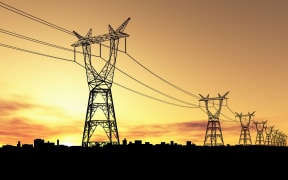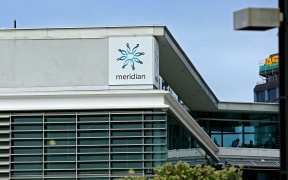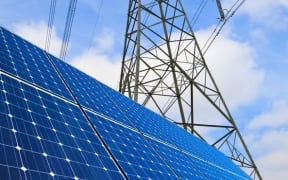The New Zealand electricity system is approaching its most difficult winter conditions for five years, electricity experts say.
This is because low rainfall levels have starved South Island hydro lakes of water.

New Zealand's largest hydro electric dam, Benmore Dam, in the South Island. Photo: 123rf
While no one is predicting the sort of supply crises that were common a decade ago, electricity authorities are watching closely to make sure that does not happen.
Greg Size of the Dunedin electricity consultancy Energy Link said the rain-lashed North Island had no problems with its hydro electric dams, but not nearly enough water had been flowing in to South Island hydro lakes.
"The South Island inflows have been quite low for some time now," he said.
"The storage lakes have been falling and power transfers on the inter-island link have been running mainly southwards."
Mr Size said that meant that electricity from brimming North Island hydro dams was flowing south via the Cook Strait cable, to make up for electricity the South Island hydro lakes could not produce.
This was putting pressure on companies, usually large ones, that buy electricity on the spot market, rather than using a long-term supply agreement as most householders did.
Mr Size said they would have to dig deeper into their wallet to acquire essential energy, because a shortage of electricity meant higher prices.
"Spot prices, if you go back a month or so, were running at round $50 a megawatt hour, or 5c a kilowatt hour," he said.
"Now they are around $100 or 10c on average across the day."
Due to recent closures, there were few thermal power stations available to generate the power that hydro dams could not produce.
Two of them are at Huntly, which were saved from imminent closure a year ago, to cope with situations such as this one.
They burn both coal and gas, and are owned by Genesis Energy.
Genesis' chief executive, Marc England, said his company would have to compensate for the South Island's problems.
"We are now below 70 percent of seasonal normal storage," he said.
"That means some generators are going to start drawing back on their generation of hydro electricity and some more thermal electricity will come into the market.
"Transpower alerted us this week to hitting a 1 percent risk curve, which is not too dramatic, but it does mean we are going to see some more thermal generation than we have seen for the past few months."
In an official note, Transpower said New Zealand had been draining water out of South Island hydro lakes faster than it was being replenished.
It did not expect the problem to be fixed in the short-to-medium term, because precipitation was locked up as snow at this time of the year.
Transpower, which manages the technicalities of the entire electricity system as well as running the national grid, said it was close to officially declaring New Zealand to have a dry winter.
And it raised its official designation of South Island conditions from 'normal' to 'something to watch'.




